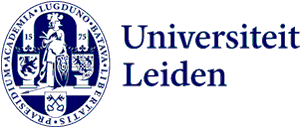
The forgotten world of Surinamese cloths and the Leiden Cotton Company
For her internship at the Textile Museum, master's student Evi van Stiphout researched the Surinamese cloths of the Leiden Cotton Company. Leiden and Suriname have a closer relationship than many people think. ‘Not much is written about Suriname’.
‘I am very interested in fashion and its history,’ Evi says. 'That's also why I started studying History. I'm from Tilburg myself and the Textile Museum is a perfect place to put that interest into practice.'
Driessen family
At the Textile Museum in Tilburg, visitors can marvel at the rich history of the textile industry in the Netherlands. The museum is also in possession of the manuscripts of the Driessen family, who, through the Leiden Cotton Company, not only traded in textiles but also manufactured them. ‘The Driessen family is known to have traded with much of the world, but what few people know is that they also manufactured for Suriname,’ Evi explains.
'This is how I came into contact with the Surinamese cloths. Usually, the focus is on Dutch trade with Indonesia or Africa, but not much is known about trade with Suriname. My research is therefore mainly exploratory. Why was trade from Suriname mainly with Leiden? How did the Netherlands become such an important link in the production of Surinamese costumes? We already knew that the Cotton Company had raw materials shipped over, which were woven in Leiden into cloths that were then shipped back to Suriname. So we were producing fabrics for other cultures on a large scale. The manuscripts of the Driessen family, which the Textile Museum has in its possession, further brought to light how Suriname's garment industry and traditional costumes fit together.'
Further interest
Although the research has now been completed, Evi would like to continue working on it. ‘I find it hugely interesting that in the Netherlands we produced fabrics for other cultures.’ One of the experts Evi has had a lot of help from is Christine van Russel-Henar, owner of the Koto Museum in Paramaribo. ‘She has been an enormous help for this research, but she couldn't answer all the questions,’ Evi says. 'And that actually shows how much still remains to be done. I have now only looked at the Leiden Cotton Company. If I had also included the Kralingse and Haarlem societies, we might have been able to get a more complete picture. The main conclusion I was able to draw from my research is that, in the field of Surinamese cloths, there is much more to be researched. I have been able to answer some questions in this study, but there are so many more that I have not yet been able to find answers to. So I hope to be able to do that in the future.'
